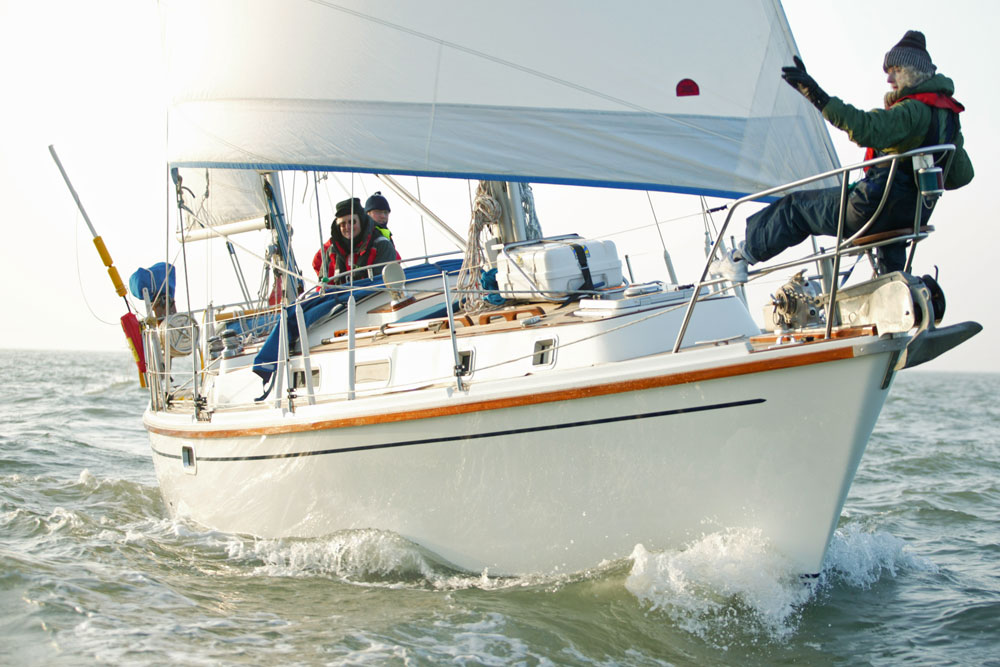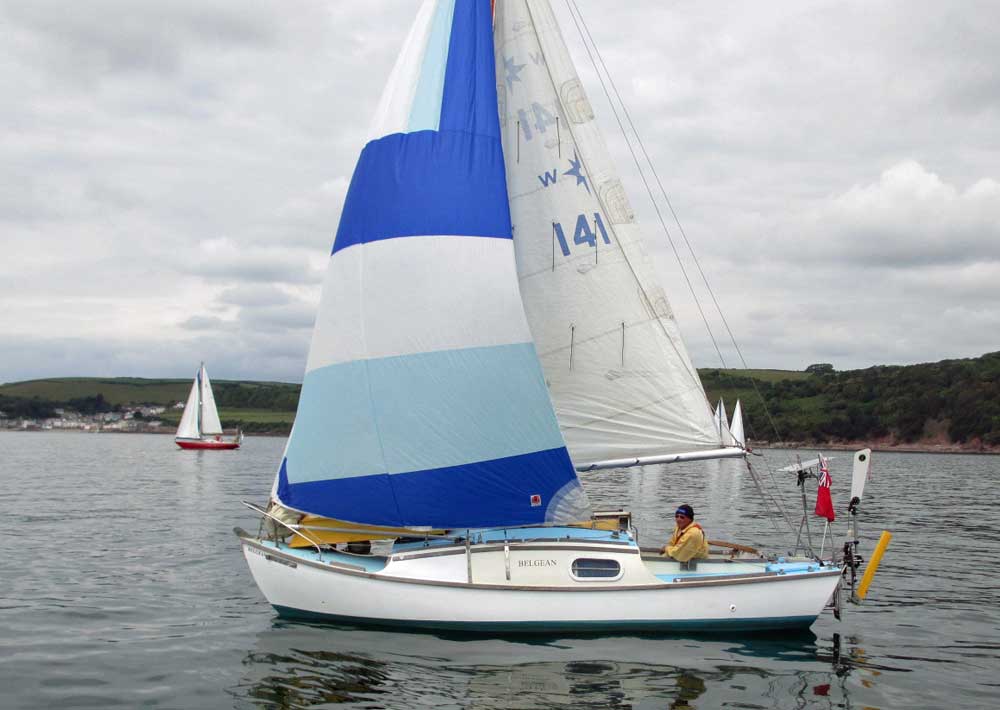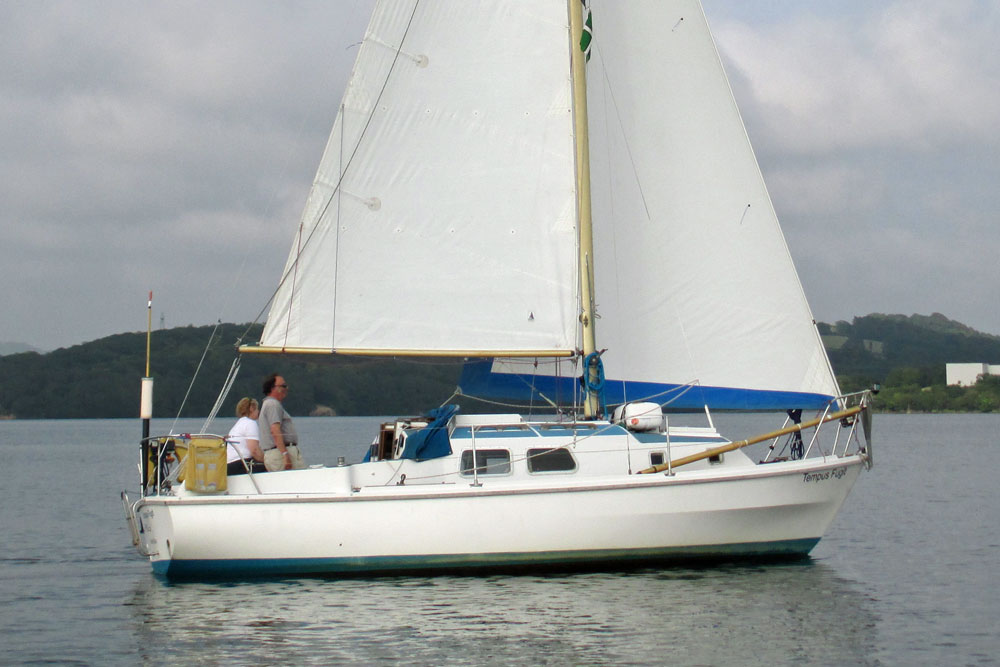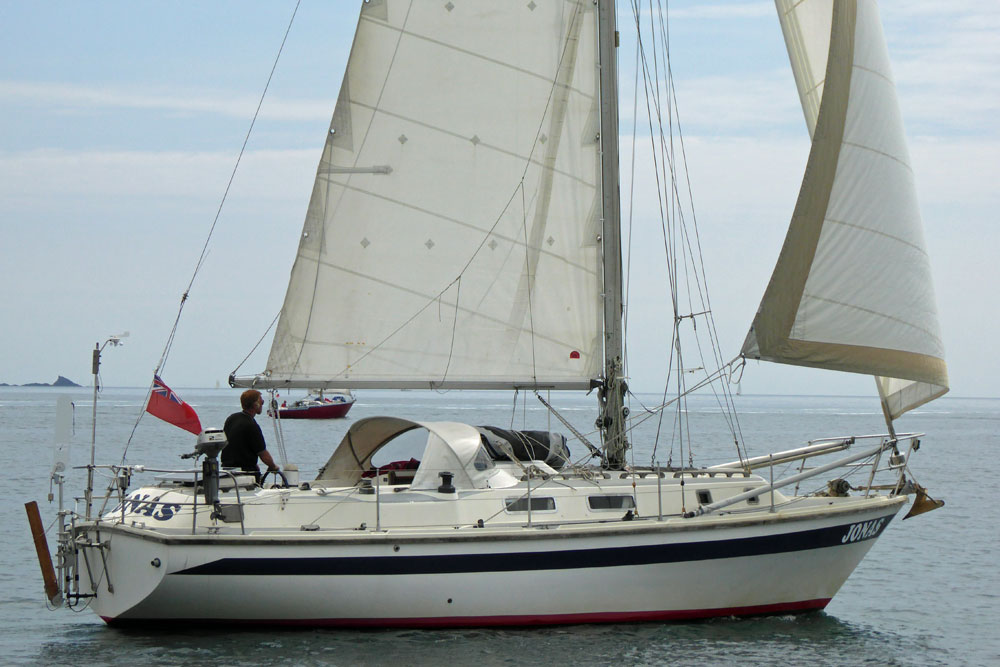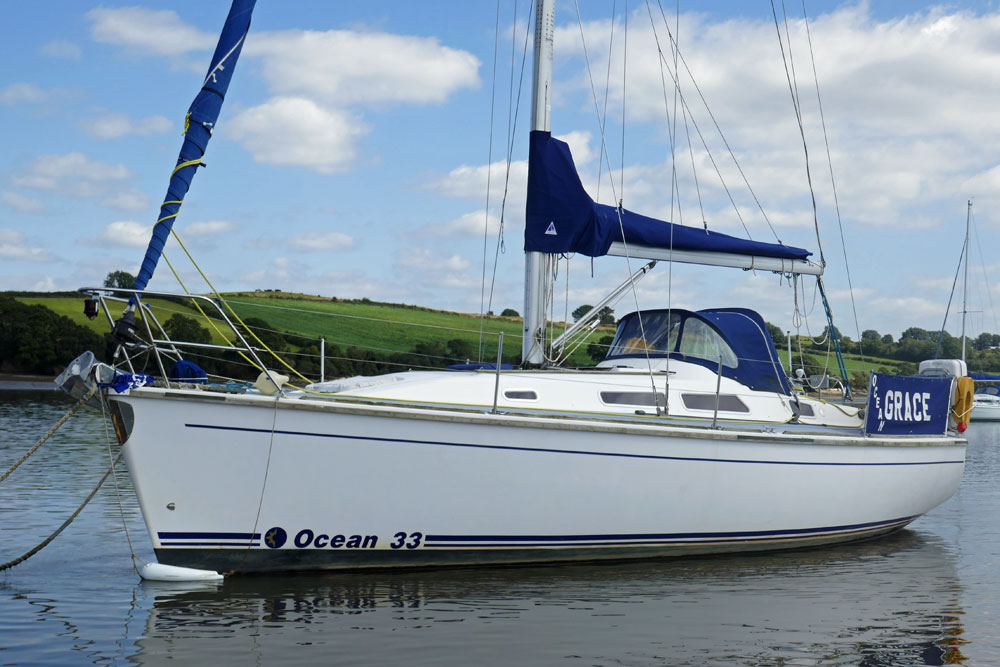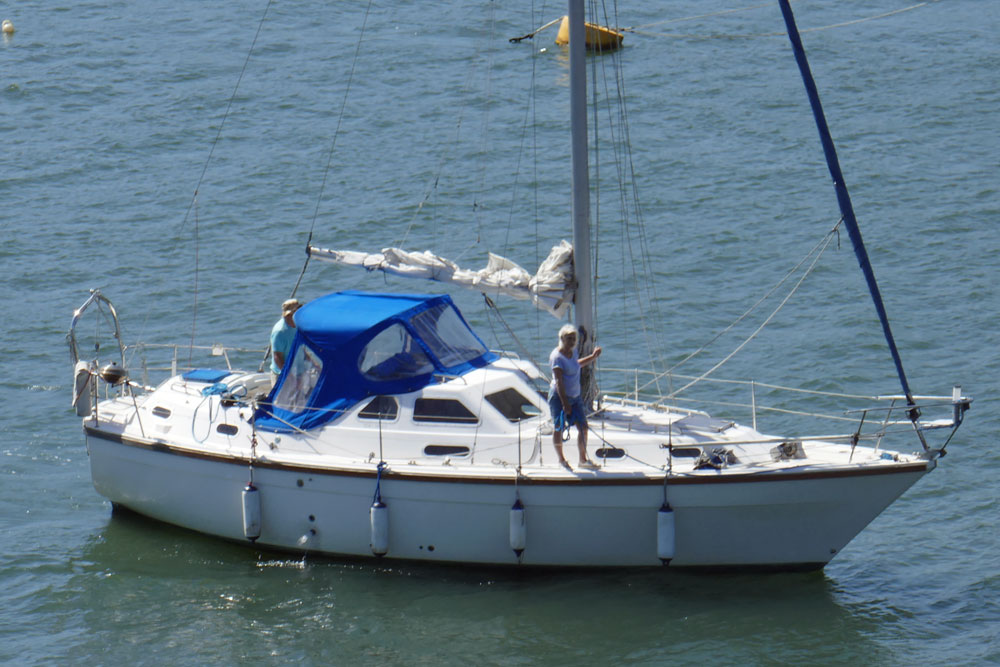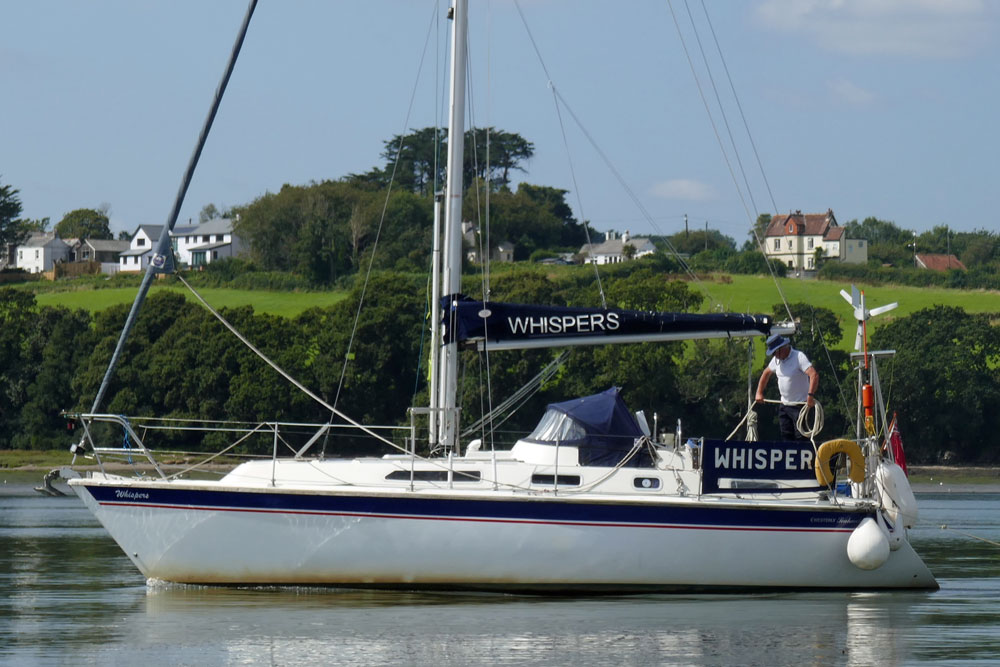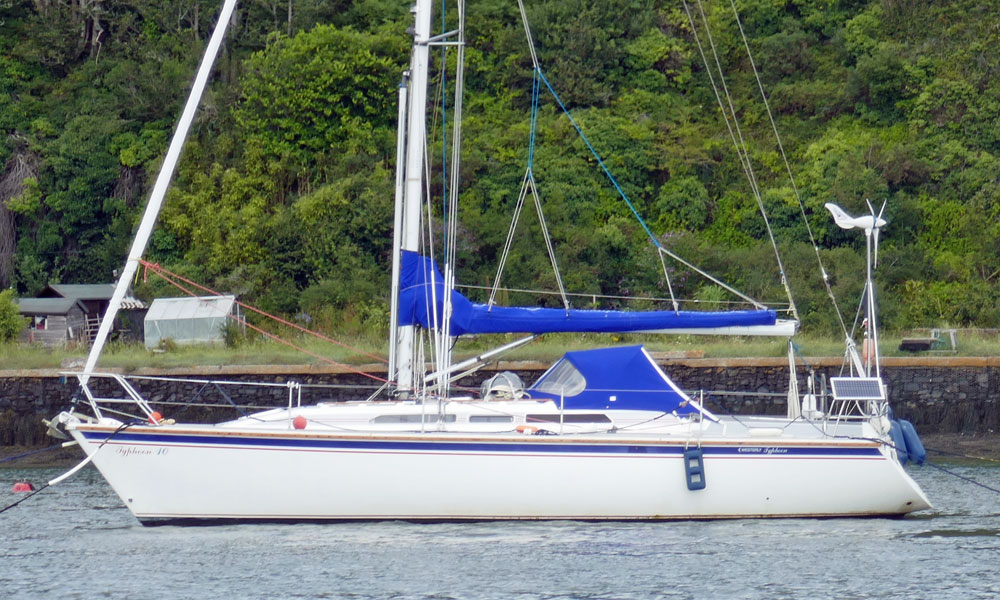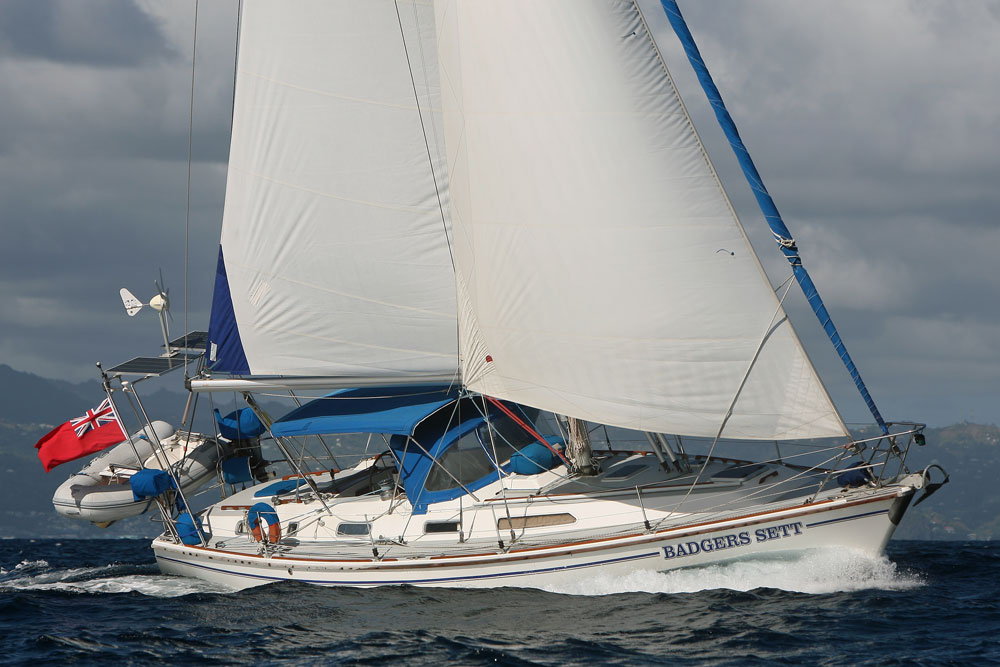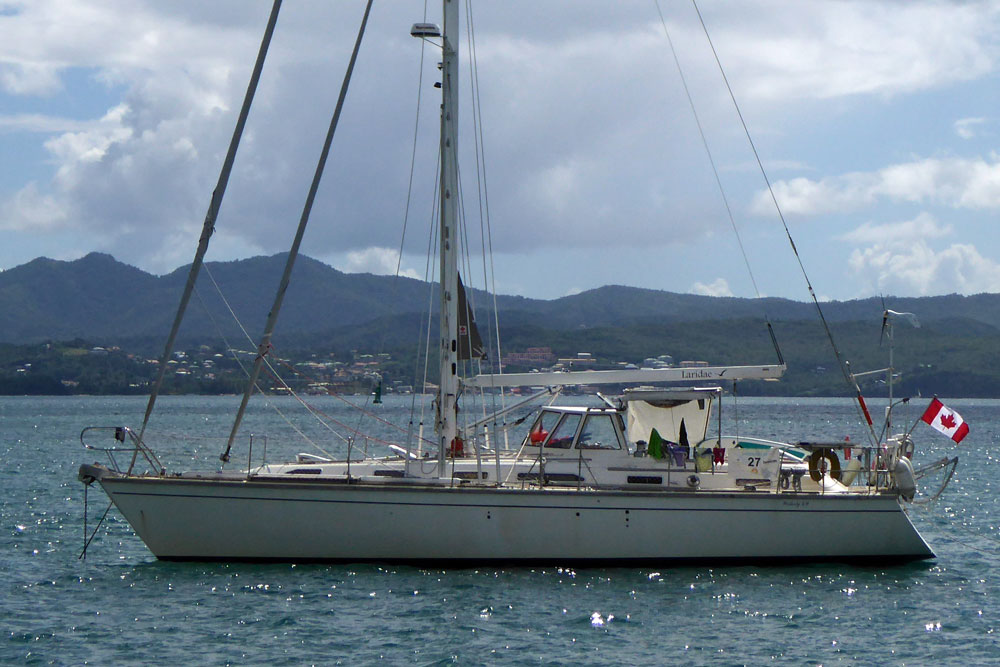- Home
- Cruising Yachts 35' to 40'
- Westerly Conway
The Westerly Conway 36 Sailboat
Specs & Key Performance Indicators
The Westerly Conway 36, a centre-cockpit ketch, was designed by Laurent Giles and built in the UK by Westerly Marine Ltd.
Published Specification for the Westerly Conway 36
Keel & Rudder Configuration: Fin keel and skeg-hung rudder
Hull Material: GRP (Fiberglass)
Length Overall: 35'9" (10.90 m)
Waterline Length: 30'3" (9.22 m)
Beam: 11'2" (3.40 m)
Draft: 6'0" (1.83 m)
Rig Type: Ketch or sloop
Displacement: 16,182 lb (7,316 kg)
Ballast: 7,168 lb (3,251 kg)
Water Tank Capacity: 75 gallons (284 liters)
Fuel Tank Capacity: 42 gallons (159 liters)
Hull Speed: 8.1 knots
Designer: Laurent Giles
Builder: Westerly Marine Ltd (UK)
Year First Built: 1975
Year Last Built: 1978
Owners Association: Westerly Owner Association
Options & Alternatives
The Conway was available with either a masthead sloop or ketch.
In 1979 the Conway was rebranded as the Westerly Conway 36MkII. This was a slightly updated version with minor modifications to the original design, including some improvements in the interior layout and rigging options.
Several later versions of the Westerly Conway sailboat were produced, each with distinct features:
Westerly Solway
- Keel Configuration: Twin bilge keels.
- Cockpit: Centre cockpit.
- Rig Type: Available as a sloop or ketch.
Westerly Galway
- Keel Configuration: Twin bilge keels.
- Cockpit: Aft cockpit.
- Rig Type: Available as a sloop or ketch.
Westerly Medway
- Keel Configuration: Deep fin keel.
- Cockpit: Aft cockpit.
- Rig Type: Available as a sloop or ketch.
Sail Areas & Rig Dimensions
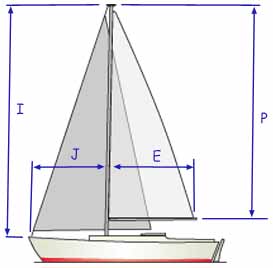 Sail Areas & Rig Dimensions
Sail Areas & Rig DimensionsI: 43.0 ft (13.1 m)
J: 14.0 ft (4.3 m)
P: 37.0 ft (11.3 m)
E: 12.0 ft (3.7 m)
These dimensions apply to the sloop rig configuration. The sail area for the main and headsail combined is approximately 700ft2 (65m2).
Where:
- “I” is measured along the front of mast from the highest halyard to the main deck. The main deck is where the deck would be if there were no deckhouse.
- “J” is the base of the foretriangle measured along the deck from the headstay to the mast.
- “P” is the luff length of the mainsail, measured along the aft face of the mast from the top of the boom to the highest point that the mainsail can be hoisted.
- “E” is the foot length of the mainsail, measured along the boom from the after face of the mast to the outermost point on the boom to which the main can be pulled.
Published Design Ratios
The Key Performance Indicators (KPIs)
Sail Area/Displacement Ratio: 12.69
Ballast/Displacement Ratio: 44.4%
Displacement/Length Ratio: 260
Comfort Ratio: 31.5
Capsize Screening Formula: 1.8
The following analysis of the primary design ratios gives an indication of the boat's likely sailing characteristics, but see the 'Notes of Caution' that follow below:
- Performance: The Sail Area/Displacement Ratio of 12.69 suggests the Westerly Conway might be considered somewhat underpowered compared to modern designs. While it may not win races against lighter, more aggressively-sailed boats, it still promises comfortable cruising performance.
- Stability and Power: A Ballast/Displacement Ratio of 44.4% indicates the Westerly Conway is a stiff sailboat, capable of carrying a lot of sail and standing up well to strong winds. This stability translates into a powerful boat that can handle challenging conditions.
- Hull Characteristics and Speed: With a Displacement/Length Ratio of 260, the Westerly Conway falls into the Moderate Displacement category. This suggests a balance between comfort and performance. It will likely require a bit more sail area to reach its hull speed compared to a lighter displacement boat, but it will also provide a more comfortable motion in a seaway.
- Comfort: The Comfort Ratio of 31.5 suggests the Westerly Conway offers a good balance between performance and comfort. Sailors can expect a reasonably comfortable ride, even in moderately rough conditions. It is likely to be less lively than a dedicated racing boat but more stable and comfortable for longer journeys.
- Bluewater Capability: A Capsize Screening Formula of 1.8 indicates the Westerly Conway is generally well-suited for offshore passages. The combination of moderate displacement and a design that prioritizes stability suggests a boat that can handle itself in challenging open-water conditions.
Overall: The Westerly Conway appears to be a well-balanced design that prioritizes stability, comfort, and seaworthiness over outright speed. It is likely a capable boat for coastal cruising and venturing offshore, offering a reassuring and predictable sailing experience.
Here's how to calculate the KPIs yourself - without having to wrestle with the mathematics...
Design Ratios: Notes of Caution...
- The Sail Area/Displacement Ratio (SA/D): This ratio provides an estimate of the sail power relative to the boat's weight, which can indicate potential speed in various wind conditions. But it doesn't account for the efficiency of the sail plan, the rigging, or the skill of the crew. Real-world performance can vary significantly based on these factors.
- The Ballast/Displacement Ratio (B/D): This ratio gives an idea of the boat's stability and stiffness, which is crucial for handling and safety. But it doesn't consider the distribution of the ballast or the hull shape, both of which can greatly affect stability. A high B/D ratio alone doesn't guarantee a stable boat if the ballast is poorly distributed.
- The Displacement/Length Ratio (D/L): This ratio helps predict the boat's speed potential and its behaviour in different sea conditions. But it doesn't account for the hull design or the boat's overall weight distribution. Two boats with the same D/L ratio can perform very differently if their hull shapes are different.
- The Comfort Ratio (CR): This ratio estimates the boat's motion comfort in a seaway, which is important for long passages. But it doesn't consider the boat's interior layout, which can also affect comfort. Additionally, personal tolerance to motion varies, so a boat that is comfortable for one person might not be for another.
- The Capsize Screening Formula (CSF): This formula assesses the likelihood of a boat capsizing in heavy seas, which is critical for offshore safety. But it doesn't take into account the boat's handling characteristics or the skill of the crew. A boat with a low CSF can still capsize if poorly handled in severe conditions.
General Limitations
- Static Nature: These ratios are static measurements and don't account for dynamic factors like wave action, wind gusts, or crew actions.
- Simplification: They simplify complex interactions into single numbers, which can be misleading. Real-world performance is influenced by a multitude of factors that these ratios can't fully capture.
- Context: The context in which the boat is used (e.g., coastal cruising vs. offshore racing) can greatly affect how these ratios should be interpreted.
In summary, while these ratios provide valuable insights into the theoretical performance characteristics of a sailboat, they should be used as part of a broader assessment that includes practical experience, sea trials, and expert advice.
This article was written with the assistance of Gemini, a large language model developed by Google. Gemini was used to gather information, summarize research findings, and provide suggestions for the content and structure of the article.
Other sailboats in the Westerly range include:
Recent Articles
-
Passoa 47 Sailboat Review: Comprehensive Specs & Performance Analysis
Jan 04, 26 04:57 AM
Discover the Passoa 47, a legendary aluminium blue water cruiser by Garcia. Explore technical specifications, design ratios, and why its lifting keel is a game-changer for offshore sailors. -
Sailboat Wheel Steering Maintenance & Inspection Checklist
Dec 30, 25 02:32 PM
Keep your vessel’s helm responsive and reliable with our expert maintenance checklist. Master cable tensioning and system inspections to avoid mid-passage failures. -
Modern Boat Electronics and the Latest Marine Instruments
Dec 20, 25 05:27 PM
Should sailboat instruments be linked to the latest boat electronics as a fully integrated system, or is it best to leave them as independent units?
